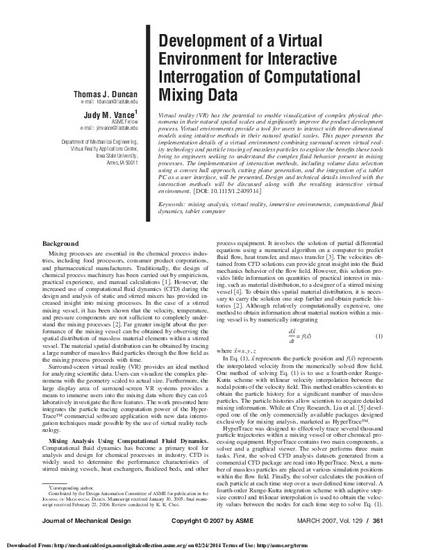
Virtual reality (VR) has the potential to enable visualization of complex physical phenomena in their natural spatial scales and significantly improve the product development process. Virtual environments provide a tool for users to interact with three-dimensional models using intuitive methods in their natural spatial scales. This paper presents the implementation details of a virtual environment combining surround-screen virtual reality technology and particle tracing of massless particles to explore the benefits these tools bring to engineers seeking to understand the complex fluid behavior present in mixing processes. The implementation of interaction methods, including volume data selection using a convex hull approach, cutting plane generation, and the integration of a tablet PC as a user interface, will be presented. Design and technical details involved with the interaction methods will be discussed along with the resulting interactive virtual environment.
Available at: http://works.bepress.com/judy_vance/13/

This article is from Journal of Mechanical Design 129 (2006): 361–367, doi:10.1115/1.2409314. Posted with permission.